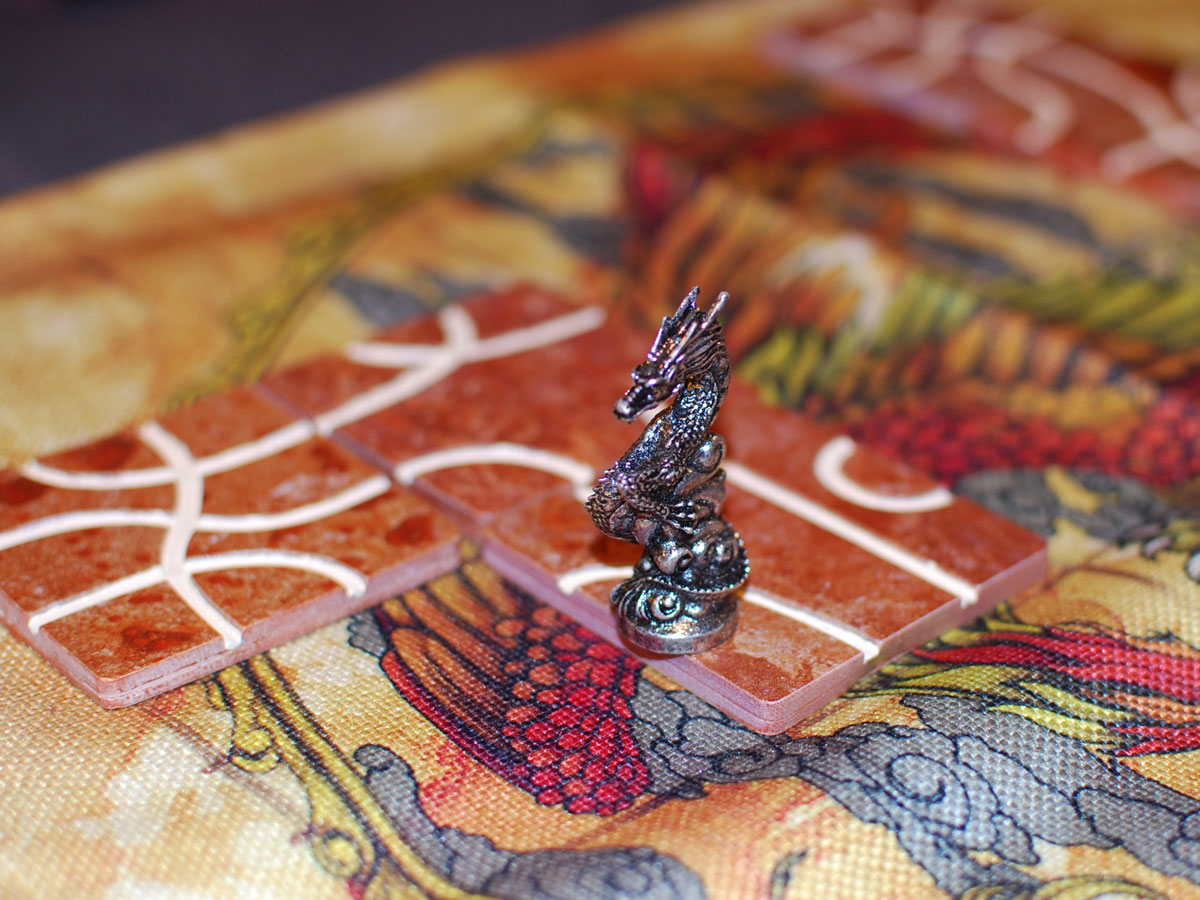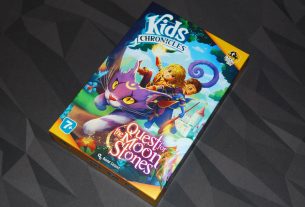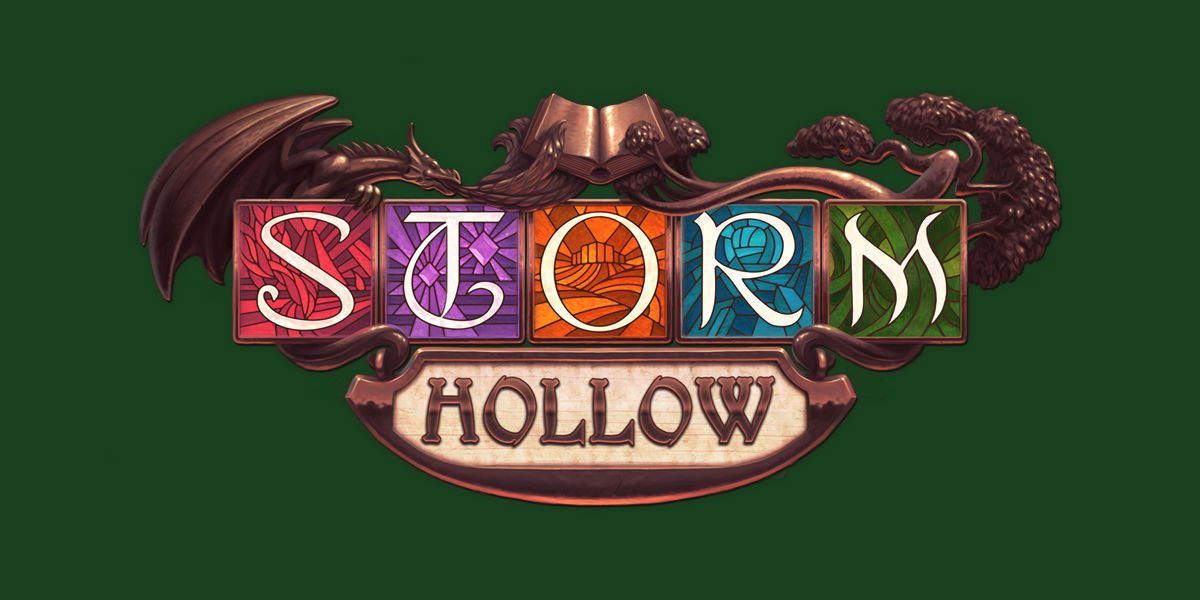The classic casual game Tsuro gets a deluxe makeover.
What Is Tsuro: Luxury Limited Edition?
Tsuro: Luxury Limited Edition is a deluxe version of Tsuro, a tile-placement game for 2 to 8 players, ages 8 and up, that takes about 20 minutes to play. It’s currently seeking funding on Kickstarter, with a pledge level of $350 (plus shipping) for a copy of the game. The gameplay is the same as the original; this edition is all about the deluxe components.
Tsuro was designed by Tom McMurchie and published by Calliope Games, with artwork by Andy Hepworth.
New to Kickstarter? Check out our crowdfunding primer.

Tsuro: Luxury Limited Edition Components
Note: I was loaned a prototype for this review; it should be fairly close to the finished product except for minor tweaks.
Since the Tsuro: Luxury Limited Edition is all about the fancy new components, I’ll mostly be focusing on those in this write-up, but in case you’re not familiar with Tsuro I’ll give you an overview of the gameplay as well.
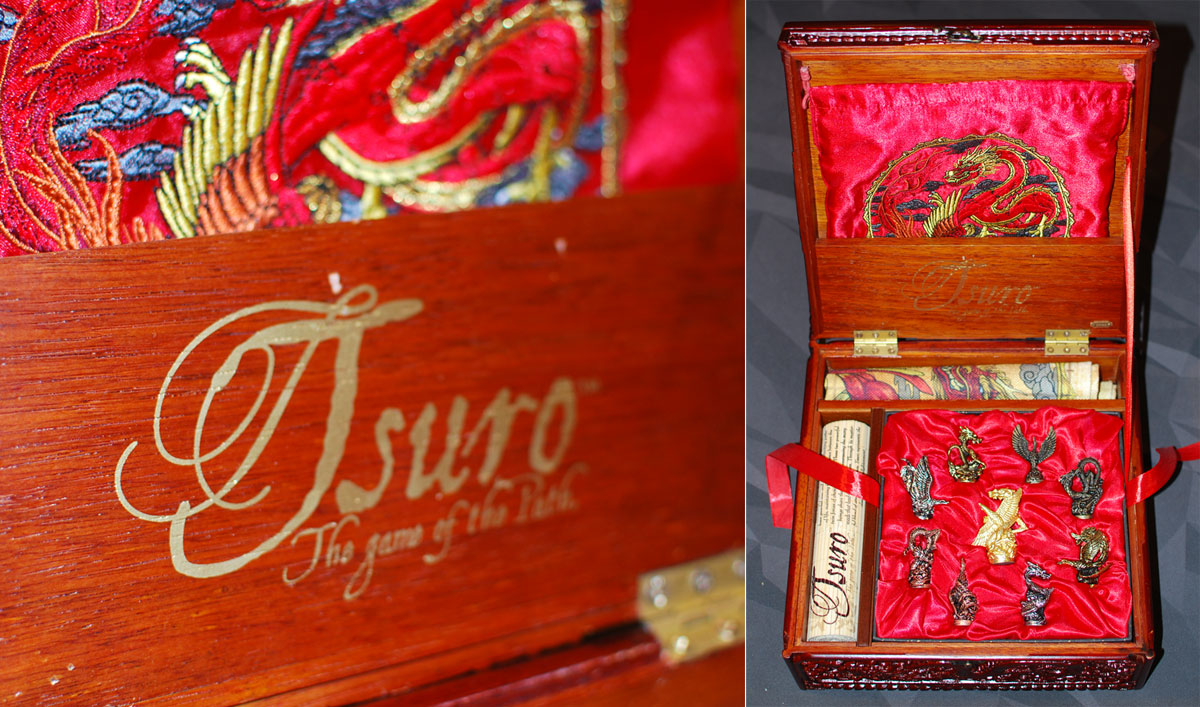
Here’s what’s included:
- Carved wooden box
- Bamboo scroll rules
- Embroidered cloth bag
- Cloth gameboard
- 8 Metal player pawns
- Metal Destiny pawn
- 35 Tiles
The box itself is a wooden chest with a metal clasp; it has intricate carvings of dragons and phoenixes on the top and sides and reminds me of a jewelry chest. It’s gorgeous and heavy, the sort of thing you’d expect to see prominently displayed on a shelf of curios or on a coffee table—though maybe not in my house, where the coffee table is constantly piled up with various kids’ crafts and LEGO pieces.
Opening it up, you see the cloth bag in a pocket in the lid, a bamboo scroll on the left, the cloth board at the top, and the metal pawns.
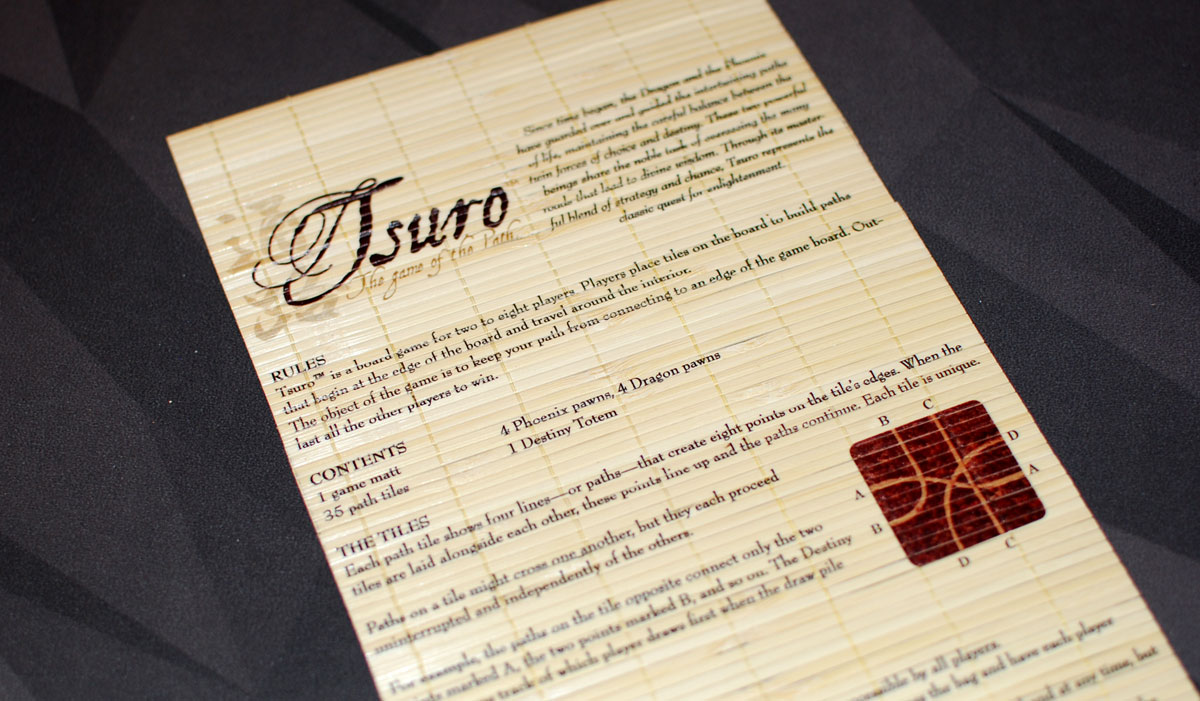
The rules are printed on a bamboo scroll—Tsuro has a compact set of rules, so it fits on a scroll. I would guess that most people who would get a deluxe edition of the game may know how to play it already, but it’s a fun touch.
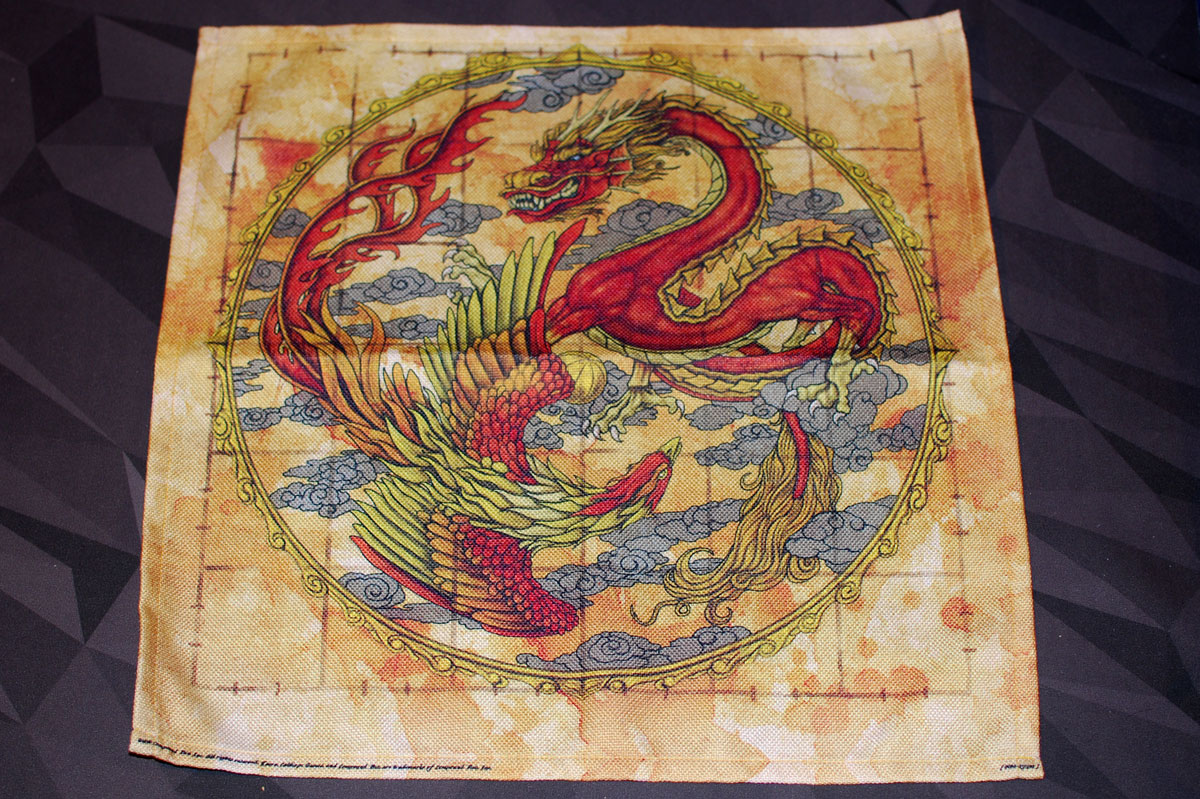
The game board is a cloth mat, illustrated with a dragon and phoenix matching the carving on the box lid. There’s a 6×6 grid of squares and markings along the edges that indicate starting spaces. The cloth was a canvas fabric, printed to look a bit aged and stained. The prototype tended to curl up a bit at the edges and I imagine maybe ironing it would have helped, though since it wasn’t mine to keep I decided not to experiment with that!

There are 8 metal player pawns: each one is a dragon or phoenix in one of four colors, and they’re all unique sculpts. The large golden pawn depicting the dragon and phoenix together is the destiny pawn. All of them are stored in a molded satin-covered tray that lifts out of the box with a ribbon. They’re solid and weighty, with a felt pad at the bottom.

Underneath the tray of pawns is the tiles, stacked in a grid, with a ribbon to help you pull them out.
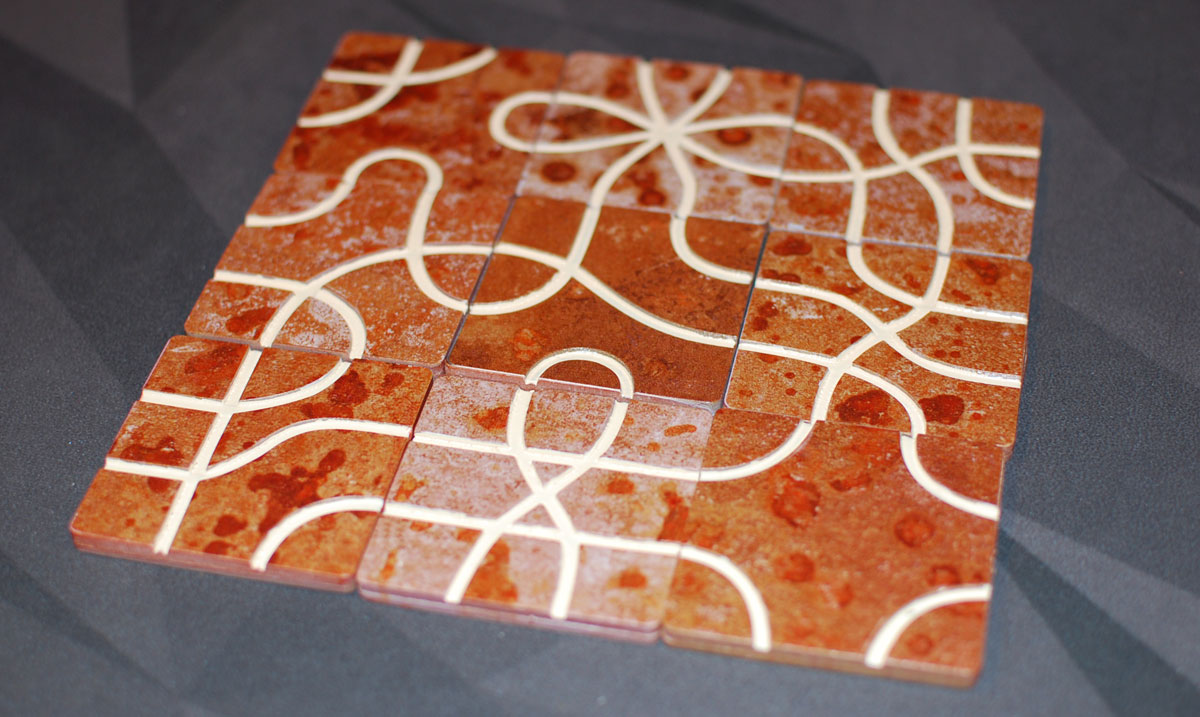
The tiles are made of a heavy resin and are made to look like stone or clay tiles, with some variations in the colors so they’re not all uniform. The paths are etched into the tiles and painted, adding a tactile element that wasn’t present in the original.

The cloth bag for the tiles is embroidered with the dragon and phoenix seen on the board. It’s sized to fit the box lid, but it’s a bit of a tight squeeze to fit all of the tiles into the bag. Fortunately once you’ve drawn your starting tiles from it (particularly if there are a lot of players), there’s a bit more space in there to mix up the tiles, but it can be tricky right at first.
Each copy of the game will also be signed and numbered.

How to Play Tsuro
You can download a copy of the rulebook here. The gameplay is the same as the original, but I’ll give a quick summary here.
The Goal
The goal of the game is to be the last player remaining on the board.
Setup
Shuffle the tiles in the bag; each player takes 3 tiles to form their hand. Each player in turn order picks a starting spot along the edge of the board. (Each of the squares has two paths per edge.)
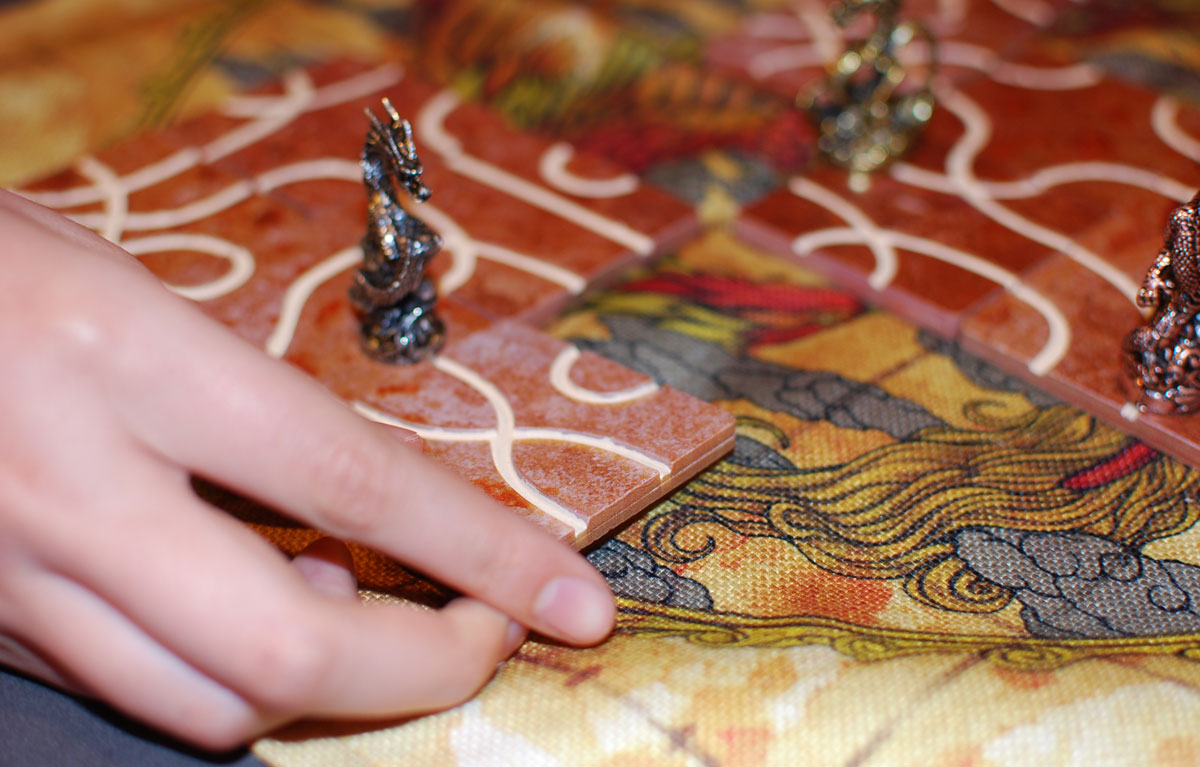
Gameplay
Players takes turn playing tiles. The tile you place must extend your own path—you cannot place a tile somewhere else on the board—and then you move your pawn along the path until it ends. If you get routed to the edge of the board, you are eliminated from the game (and return any remaining tiles in your hand to the bag). After playing a tile, you draw a new tile.
When more than one player borders the same empty space, then whoever plays a tile there not only extends their own path but also changes the course of the other players as well, and their pawns are also moved to the ends of their paths.

The destiny pawn replaces the dragon tile from the original game: if you need to draw a tile but there are none left, you take the destiny pawn. As players are eliminated and their tiles are put back in the draw pile, the player with the destiny pawn draws first.
Game End
The game ends when there is only one player left on the board—that player wins! In some cases, more than one player will be eliminated on the last turn, leaving none on the board—in this case, those players all tie for the win. (There’s also a rare case in which all tiles have been played but there are still players left on the board—that also results in a tie.)
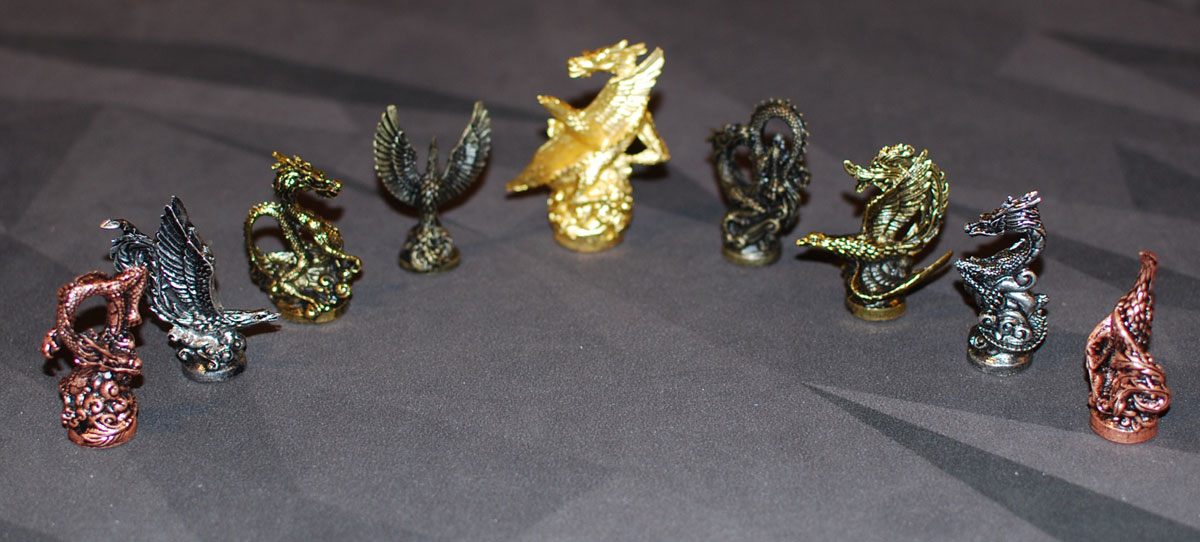
Why You Should Play Tsuro
I first wrote about Tsuro over a decade ago, and everything I said at the time still stands: it’s a cinch to teach, but allows for some fascinating play. I love the way that it can accommodate up to 8 players, but it’s still fun with two. It may not have the strategic depth of some other games I love, but it’s also one I’ve never gotten tired of, and is one of my go-to games when I have a group of players with mixed experience levels with games. There have since been a couple of new variants on it—Tsuro of the Seas adds wandering monsters and Tsuro: Phoenix Rising has tiles that flip over, creating new paths—but the original may still be my favorite for its elegance and approachability.
It’s easy to see why Calliope Games loves Tsuro so much, too—it’s their flagship game, the one that launched the company, and it’s still going strong after all these years. I remember speaking to the president and founder Ray Wehrs a few years ago and he wanted to make an anniversary edition, but it kept getting delayed and pushed back for a variety of reasons. Well, it’s not an anniversary year this year (Tsuro was originally published in 2005 by WizKids, and then was reissued in 2009 when Calliope Games was formed) but Wehrs had finally found manufacturing partners who could bring his vision to life and didn’t want to wait any longer.
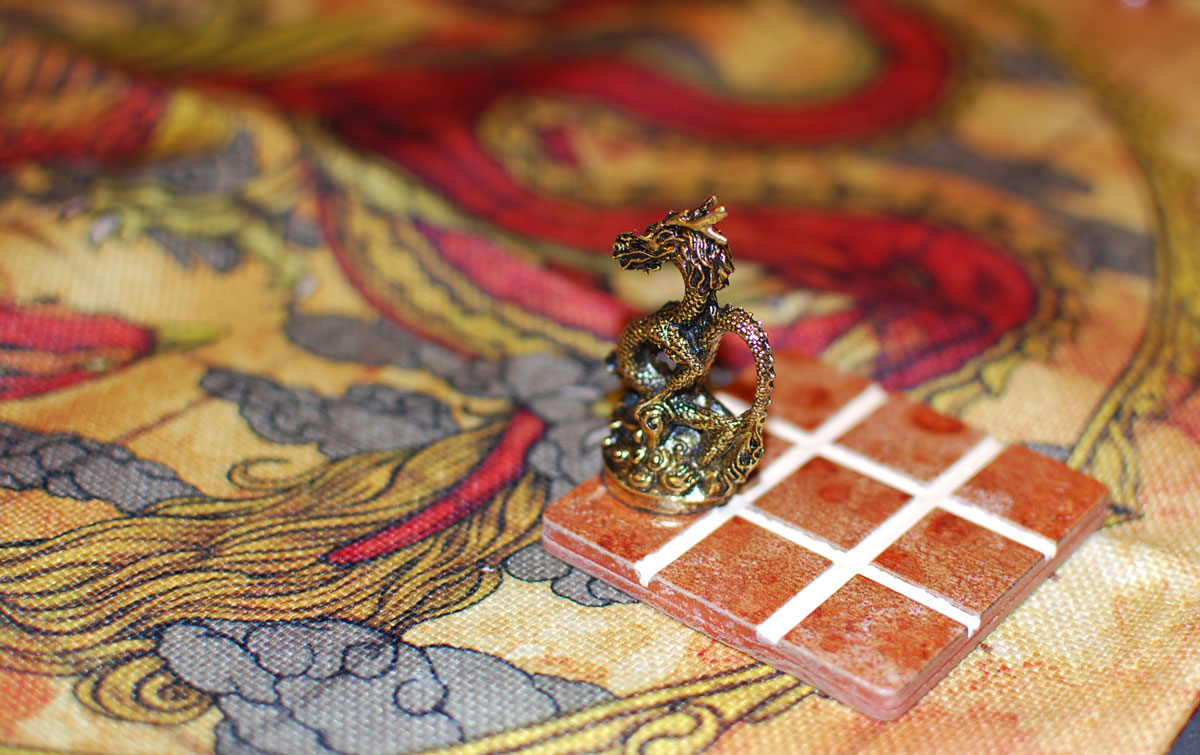
Is the Tsuro: Luxury Limited Edition for you? That’s a tougher question to answer. Tsuro is a game I don’t hesitate to recommend to nearly anyone—it works for a pretty broad audience and is an excellent title to have in any game library. This deluxe edition, though, carries a hefty price tag that isn’t for everyone; it is very much a luxury item as the title states. Another factor to take into consideration is that, given the expense of manufacturing it, this will indeed be a very limited print run and won’t be found in retail stores.
Having gotten to see and handle the prototype myself (alas, I didn’t get to keep it), I can see why it costs so much, and my kids and gaming group got a kick out of playing with these premium components. I don’t often splurge on the super-fancy versions of games myself, so I would gladly display and play with this version of Tsuro but I don’t know that it’s one I would buy for myself. The Kickstarter page describes it as an heirloom piece, and I could definitely see this set as something that could be passed down—particularly because the game itself is so timeless that I think it will remain popular for many years to come.
For more information or to make a pledge, visit the Tsuro: Luxury Limited Edition Kickstarter page!
Click here to see all our tabletop game reviews.
![]() To subscribe to GeekDad’s tabletop gaming coverage, please copy this link and add it to your RSS reader.
To subscribe to GeekDad’s tabletop gaming coverage, please copy this link and add it to your RSS reader.
Disclosure: GeekDad was loaned a prototype of this game for review purposes.
